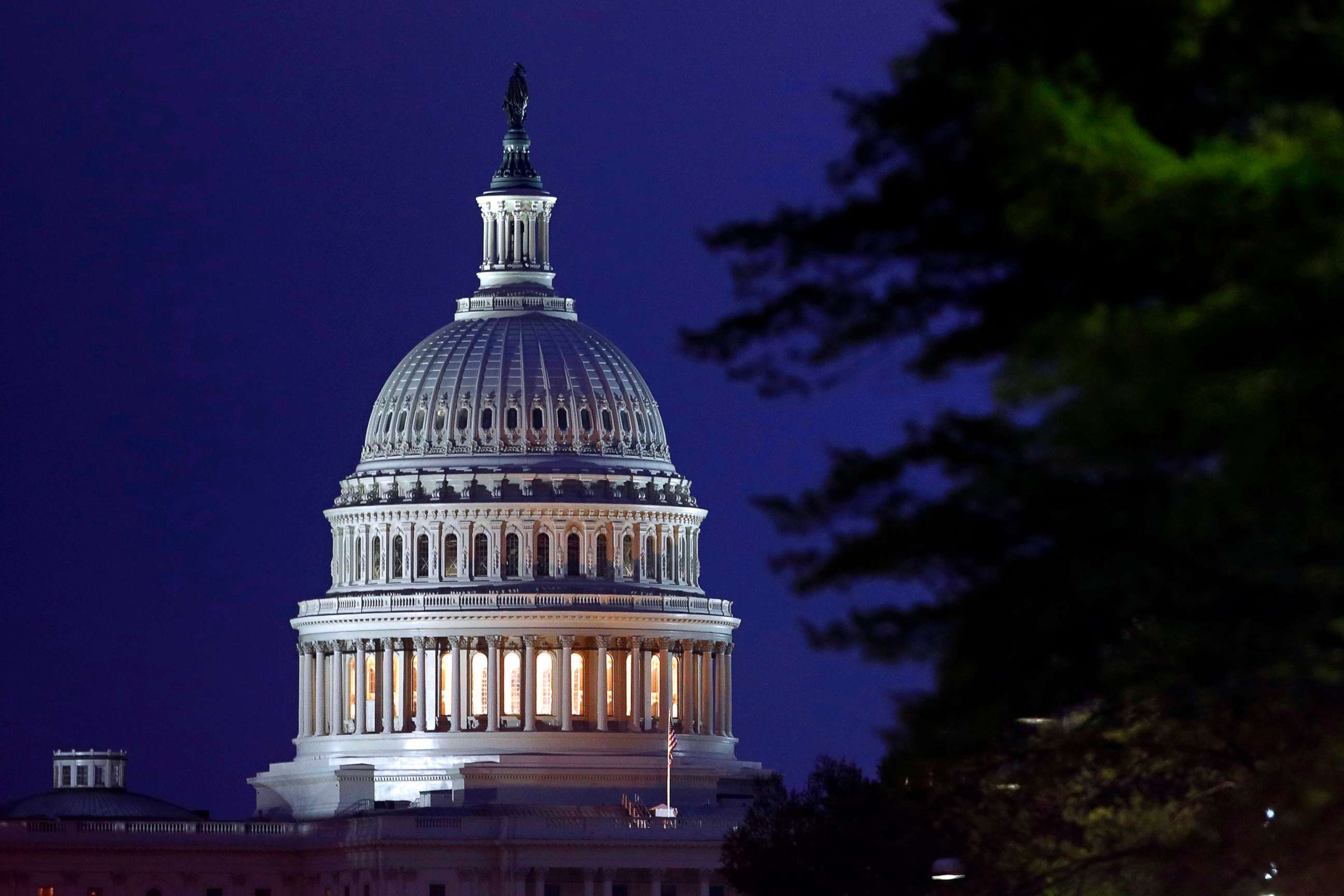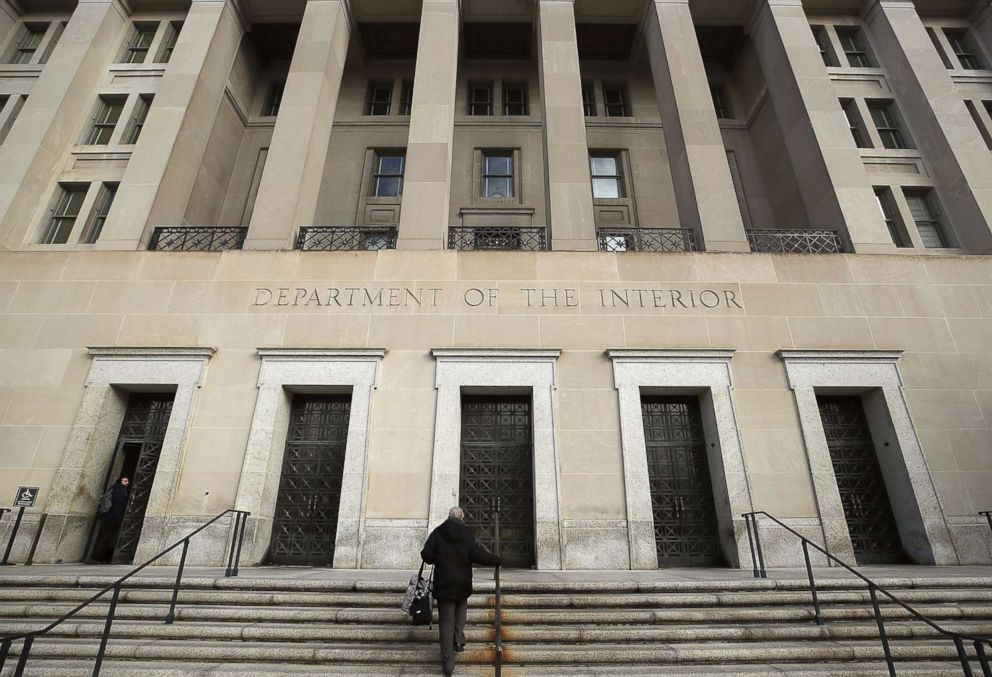Is Trump moving the government out of Washington? 5 things to know.
Trump campaigned to "drain the swamp" and critics say he's taking it apart.
President Donald Trump campaigned on a rallying cry to "Drain the Swamp," arguing the federal government is dysfunctional because Washington is corrupt and out of touch with the rest of the country.
Now critics say he's taken the first steps to take it apart.
The Trump administration wants to move hundreds of employees across the country: The question now is whether this plan would really shake things up and save money for government operations, or if it would just be a symbolic gesture.

Here's what to know:
Trump isn't moving entire federal agencies
The administration is moving offices at two of the government's largest agencies -- the Department of Agriculture and Department of Interior -- hundreds of miles across the country.
The administration announced this week that the Bureau of Land Management, which oversees public lands and issues permits for oil and gas drilling, would relocate the majority of its D.C.-based employees to offices around the country. The vast majority of BLM employees work in state-based offices, but Interior Department officials said the change would make more senior-level employees available on the local level and save the government millions of dollars on office space and allow for lower employee wages outside the D.C.-area.
The change for BLM is the second major change that would move an agency out of Washington. The U.S. Department of Agriculture also is moving about 550 positions to the Kansas City area, which would affect almost 400 employees.
85% of the federal workforce is already outside D.C.
Even though Washington is seen as the center of the government, the federal workforce is spread all over the country, in various regional offices or headquarters for various agencies.
The Washington, D.C., area has the largest concentration of federal employees -- almost 283,000 in 2017, according to the Office of Personnel Management that oversees the federal workforce. The Trump administration has also proposed eliminating that office entirely, according to The Washington Post.
That means roughly 14% of the more than 2 million federal workers are based in the D.C. area.
The USDA offices are moving to the Kansas City area, which already has around 18,000 federal workers. The BLM headquarters will move to Grand Junction, Colorado, and maintain an office separate from the regional office there. But that announcement has been met with mixed reactions because BLM employees will be spread across multiple western states instead of moving to Grand Junction en masse, which could give the area an economic boost.
Altogether, 222 BLM positions will continue officially working for headquarters out of local offices across the country, including Colorado, Nevada, Utah and Arizona, according to a letter released by Colorado Sen. Cory Gardner.

People with expertise don't want to move
The union representing employees at USDA research arms -- the National Institute of Food and Agriculture and Economic Research Service, said it expects "catastrophic" departures as a result of the move.
In smaller offices at the Department of Agriculture, the agency said more than 50% of employees declined to relocate to Kansas City or haven't told the department what they will do. At the ERS, which studies the impact of economic policies on agriculture, USDA said 99 out of 171 employees don't plan to move.
At the National Institute of Food and Agriculture, which works on agricultural research, 151 out of 224 employees slated to move declined or did not respond, according to ERS.
The BLM's decision was just announced this week, and officials said they didn't factor in an estimate of how many employees may decline to move. The move will happen over the next year and a half before the agency's lease expires at the end of 2020.
Some advocacy groups and former officials have alleged the administration is trying to dismantle the agencies by relocating them, citing comments from the president about the government being too big.
But Joe Balash, assistant secretary for land and minerals management, denied that characterization in a call with reporters on Tuesday, saying it's outdated to think agencies can only operate in D.C. when technologies like teleconferencing mean people can do their jobs, perhaps even better, elsewhere.
Members of Congress have also raised concerns that this "brain drain" could slow agencies' work or result in a loss of institutional knowledge should experienced employees have to be replaced.
Salaries will be lower outside Washington
Balash said the Interior Department has an "aggressive" hiring strategy to replace any employees that leave the agency, and USDA officials have also said they'll look to hire locally to replace employees who don't leave D.C.
But those people applying for government jobs will be offered a lower salary than if the jobs were in D.C. because government salary scales are calculated based on cost of living.
The difference in staff salaries, combined with other savings, should save the government money. Balash said Interior could save between $50 million and $100 million over 10 years.
Critics of the moves at USDA, including Ron Wasserstein, executive director of the American Statistical Association, have questioned whether the employees actually will be replaced or if the change is a way to reduce the size of the office.
In an op-ed in The Kansas City Star, Wasserstein pointed out that USDA's budget for the 2020 fiscal year asks for funding for 160 ERS employees, about half the previous staffing levels.
Part of a broader attitude toward government
Union leaders and advocates have also raised concern that disregard for employees in these decisions is part of the administration's overall attitude toward public servants. Employees from the two USDA offices actually voted to unionize in an attempt to block or slow down the relocation, but they won't start negotiations with the agency until this week. The USDA move is set to be final at the end of September.
"The USDA has provided no rational justification to employees, to Congress, or to its stakeholders for this move, which will make it harder for the agencies to coordinate with other science and research agencies. We will continue to work with Congress and other parties to fight this wrongheaded proposal, which is little more than a backdoor way to slash the workforce and silence the parts of the agencies' research that the administration views as inconvenient," J. David Cox, president of the American Federation of Government Employees, said in a statement last month.
Federal employees have been frustrated by government shutdowns that had them waiting for compromises between Congress and the administration over the past two years.
The Washington Post also reports that unions were recently stymied in an attempt to knock down an executive order that could make it easier for agencies to fire federal workers they deem underperforming.
In 2018, the administration also proposed a significant reorganization of the federal government but hasn't taken any steps to further that plan on a broader scale.




